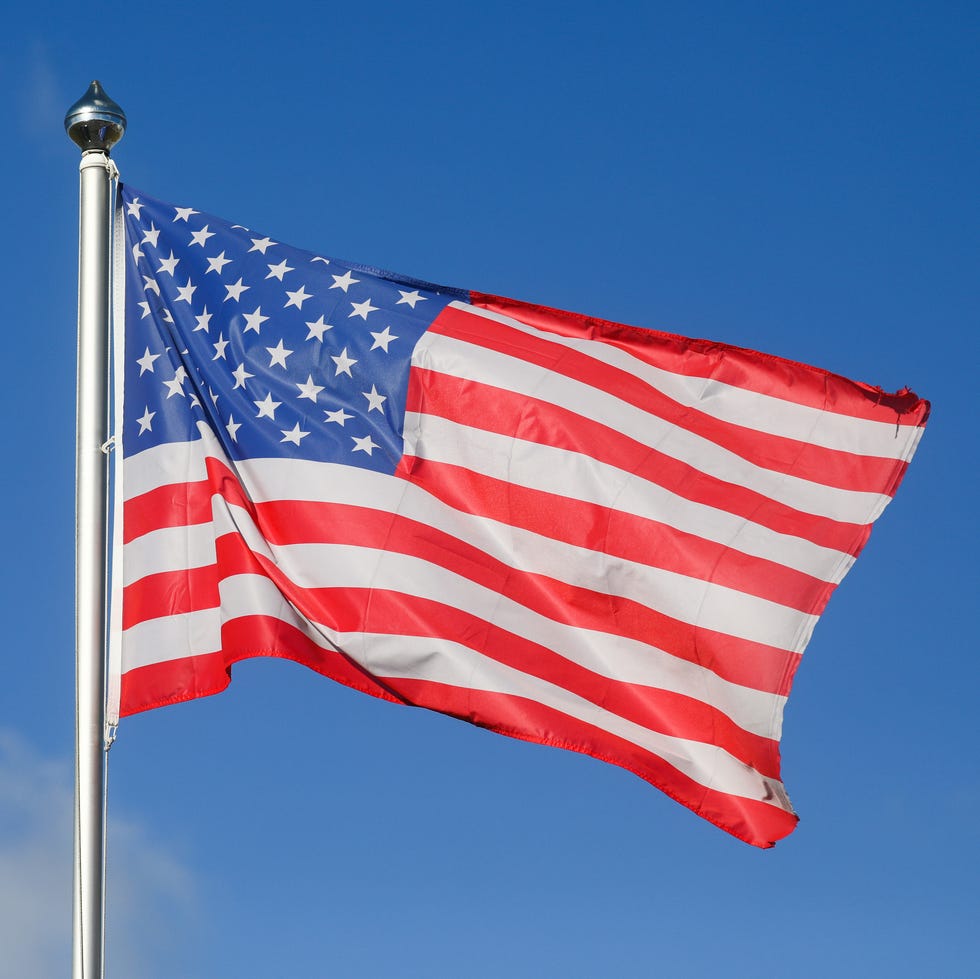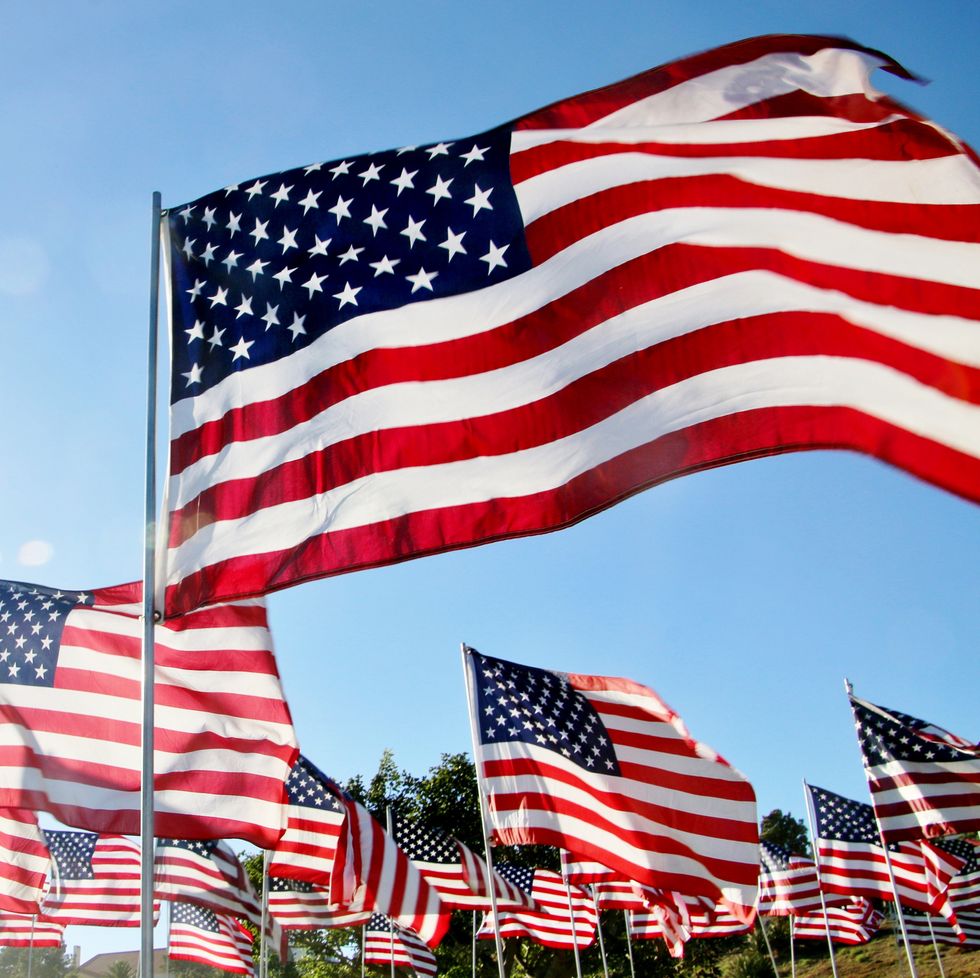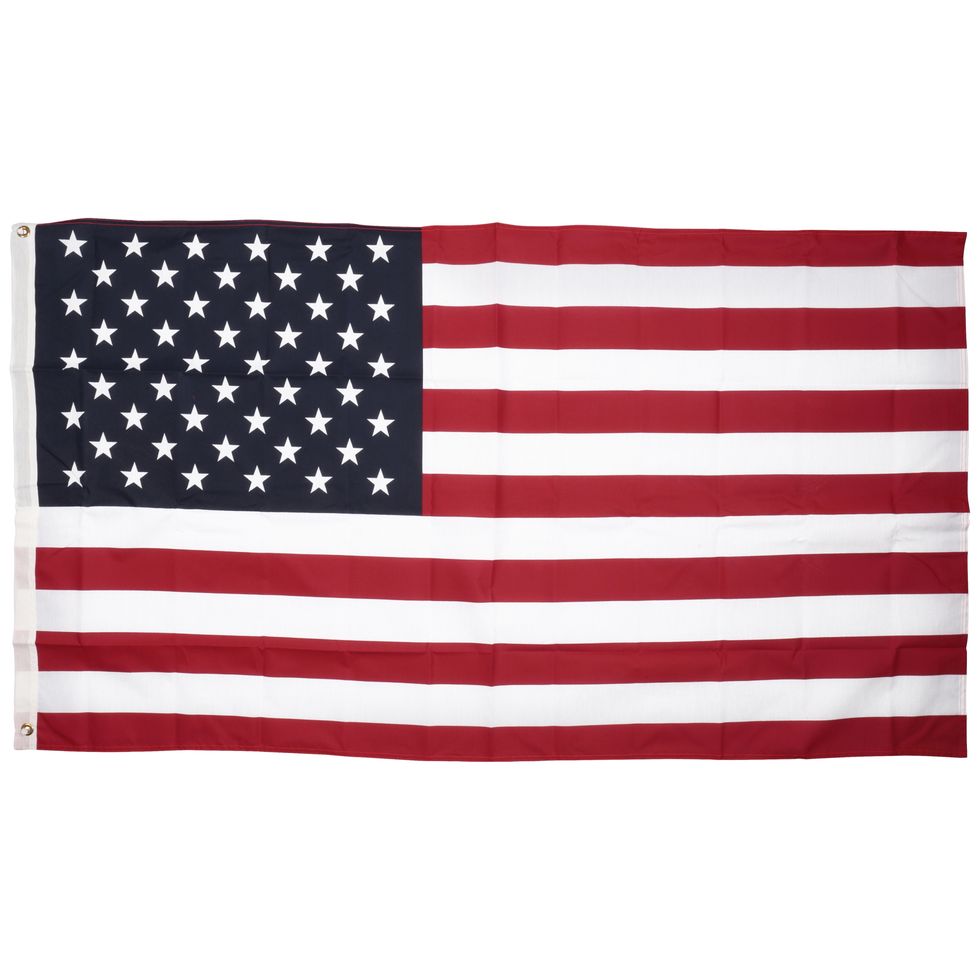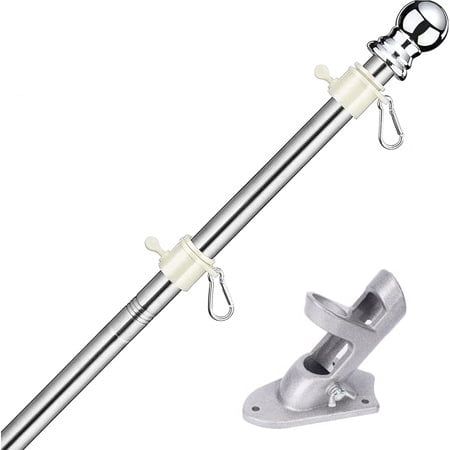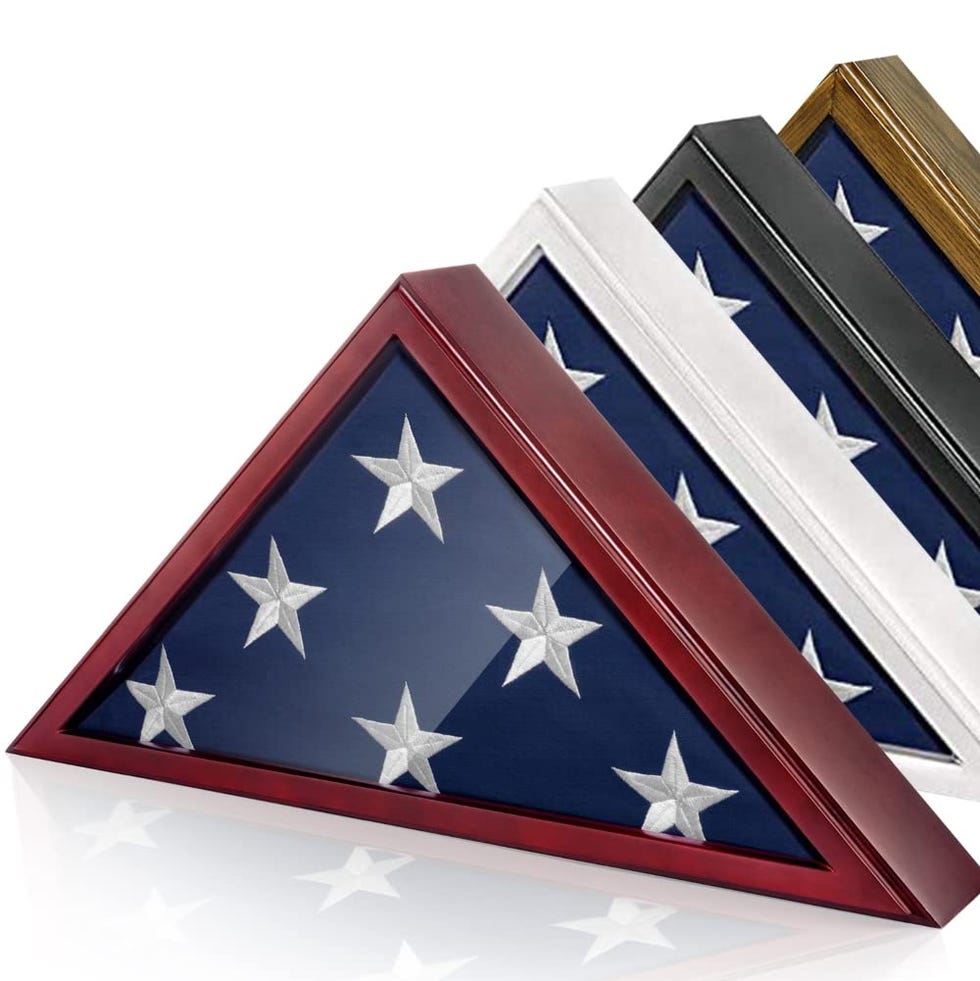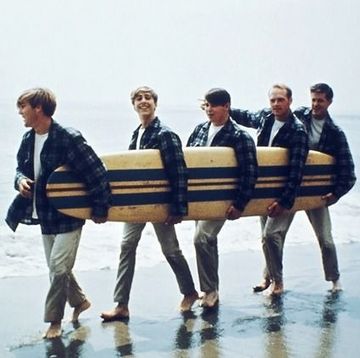There's really no better way to show off your patriotic pride than by flying the grand old flag—especially during the upcoming all-American holidays like Memorial Day, Flag Day, 4th of July, and Veteran's Day. We don't blame you; flying the American flag is both festive and a great way to honor those who have served our country over the years. But that's also why it's so important to make sure it's done properly. So, while planning your cookouts and town celebrations or mapping out the best location to watch fireworks light the night sky, you should also keep in mind the rules of flag etiquette.
To start, do you know how many stars and stripes are on the American flag? The U.S. flag has 50 white stars on a blue field to represent the 50 states while the 13 alternating red and white stripes represent the 13 original colonies, according to USA GOV. Additionally, Public Law 94-344, also known as the Federal Flag Code, contains rules for handling and displaying the flag. That way, you're showing respect for our country and the freedoms so many have fought for.
Below, we've compiled many of the do's and don'ts for flying The Red, White, and Blue. You can also view a complete list of guidelines for properly displaying the Star-Spangled Banner from the U.S. Department of Veterans Affairs, including specific rules on how to properly display the flag on Memorial Day and about flying the American flag at half-staff. Now, you can celebrate our country and those who have served it the right way!
Display the flag often.
Especially on national and state holidays or special occasions like Memorial Day, Flag Day, and the 4th of July, it is the perfect show of patriotism! If you're hanging the flag from your house, do so on a staff or on a rope over the sidewalk with the stars facing away from the building. If you want to place the American flag in your window or on a wall, it should be displayed with the union stars to the left of the observer in the street. When displayed over a street, place the union so it faces north or east. In a group of flags, the U.S. flag should always be at the center and the highest point. If it's displayed other than from a staff, it should be flat or suspended so that its folds fall free.
Only fly the flag until sunset unless it's lit up.
Traditional guidelines say we should only fly our Stars and Stripes from sunrise to sunset. But that rule has since changed! As long as the flag is properly illuminated after dark, you can go ahead and display your pride 24/7.
Use the flag in a parade.
Who doesn't love a patriotic parade―all the festive floats, music, and excitement! Just make sure it's done right. When displayed on a float, the U.S. flag should be hung from a staff or suspended so it falls freely. When marching, Old Glory leads the parade alone or is carried on the right, facing forward. If you want The Red, White, and Blue on your car, then attach the flag to the antenna or to the right fender. Don't lay the flag over your vehicle.
Salute the flag.
Another thing to remember when celebrating on Memorial Day, 4th of July, or any other holiday is saluting the flag. It's important to proudly salute during the raising or lowering of the flag or when it passes in parade. Americans should face the flag, stand at attention, and place their right hand over their heart. Men should remove their hats. And a heads up: You don't need to salute small handheld flags.
Know when to fly it at half-staff.
The flag is displayed at half-staff as a sign of mourning. According to the Flag Code, only the president or your state governor can make this call. To properly display the flag at half-staff—raise it to the top of the pole, then lower it to the half-way point. When flying the flag on Memorial Day, it should be displayed at half-staff until noon.
Don't let the flag touch the ground.
The flag code is pretty clear on this one. Out of respect for the flag and our country, you should never let it touch the ground—even while lowering it! This includes other surfaces like the roof of your house or your car. So just be mindful of this when flying Old Glory at your neighborhood parades, pool parties, and backyard barbecues.
Don't let the flag get dirty.
To avoid this, you shouldn't fly the flag during bad weather—heavy wind included. So, remember to check the forecast this Independence Day. Think of it like this: You wouldn't want to stand out in the rain! The only exception is an all-weather flag. You should also make sure the flag is properly secured so it doesn't fall or get damaged. If your American flag does get dirty, you should stop flying it and buy a new one as the flag should only be flown in pristine condition. Specifically, it shouldn't be tattered or torn and the stripes and union should be vibrant.
Don't dip the flag.
Another sign of respect: Never dip the U.S. flag for any person or thing. What exactly does that mean? Well, we'll tell you. You shouldn't lower the flag to a horizontal position or anything less than a 45-degree angle. Additionally, the flag should never be shown with the union (stars) down, except as a signal of distress.
Don't wear the flag.
We've all seen it: people running around under the fireworks draped in the U.S. flag. It can be tempting. After all, isn't it part of the celebration of our country? But you shouldn't ever wear the flag. It is, however, perfectly acceptable to wear clothes showing the American flag. Another thing to note: Don't place anything over the flag, including letters, insignia, or other designs.
Don't use the flag for advertising purposes.
This one is actually pretty common around patriotic holidays, but is technically considered a violation of flag code. To preserve the values for which the American flag stands, businesses or individuals should never use it for advertising or promotional purposes. This includes the promotion of products, services or brands for commercial profits. That means things like flyers, banners, and television commercials should pass on the flag graphics. It's also noted within flag code to avoid printing or embroidering the U.S. flag on items like cushions, handkerchiefs, napkins, boxes, or anything else you intend to eventually throw away.
Dispose of the flag properly.
If your flag has suffered the wear and tear of time, it might be time to grab a new Old Glory. But before doing that, make sure you properly dispose of the one you already have. The most crucial thing to note? You should never throw your flag in the garbage. Actually, it's stated that the flag should be destroyed in a dignified way—preferably by burning. Just make sure to fold it in the traditional triangle fold before burning it.
If you have a flag made of synthetic or nylon material, burning it can actually be hazardous. In that case, there are several other options available to you. You can bury a folded flag by placing it in a dignified box and digging a hole in a suitable location. Additionally, many state and county government offices as well as Veterans of Foreign Wars posts have disposal boxes located outside of their buildings. Other organizations such as American Legions and the Girl Scouts and Boy Scouts will also collect flags.
The bottom line is just be respectful! And when the holiday is over, and you want to store the flag for safekeeping until the next big patriotic celebration, you should know how to fold the American flag. Here are the basics: Fold it into a triangle then put it in a safe space. If you're having trouble with that, it's recommended to fold it the best you can. And remember, don't let it touch the ground.
Macie Reynolds is the assistant editor of E-Commerce and SEO for The Pioneer Woman.

